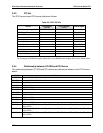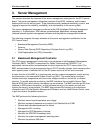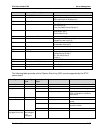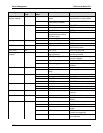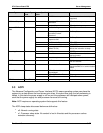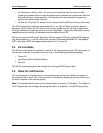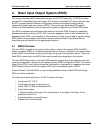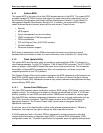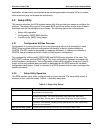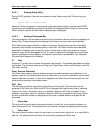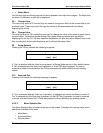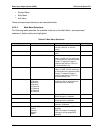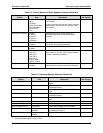
Server Management STL2 Server Board TPS
3-28
•
s4: Hibernate or Save to Disk. The memory and machine state are saved to disk.
Pressing the power button or another wakeup event restores the system state from the
disk and resumes normal operation. This assumes that no hardware changes were
made to the system while it was off.
•
s5: Soft off. Only the RTC section of the chip set and the BMC are running in this state.
The STL2 server board supports sleep states s0, s1, s4, and s5. When the server board is
operating in ACPI mode, the OS retains control of the system and the OS policy determines
the entry methods and wake up sources for each sleep state – sleep entry and wake up event
capabilites are provided by the hardware but are enabled by the OS.
With future versions of Microsoft* Windows* 9X that support ACPI, the system BIOS supports
only sleep states s0, s1, and s5. With future versions of Microsoft Windows NT* that support
ACPI, the system BIOS will support sleep states s0, s1, s4, and s5.
3.4 AC Link Mode
The AC link mode allows the system to monitor its AC input power so that if AC input power is
lost and then restored, the system returns to one of the following preselected settings:
•
Power On
•
Last State (Factory Default Setting)
•
Stay Off
The AC link mode settings can be changed by running the BIOS Setup Utility.
3.5 Wake On LAN Function
The remote power-on function turns on the system power by way of a network or modem. If
the system power is set to Off, it can be turned on remotely by sending a specific packet from
the main computer to the remote system.
Note: The standard default value of the remote power-on function is “Disabled”. The Wake-on-
LAN / Ring function can changed by setting the option to “Enabled” in the BIOS Setup Utility.



